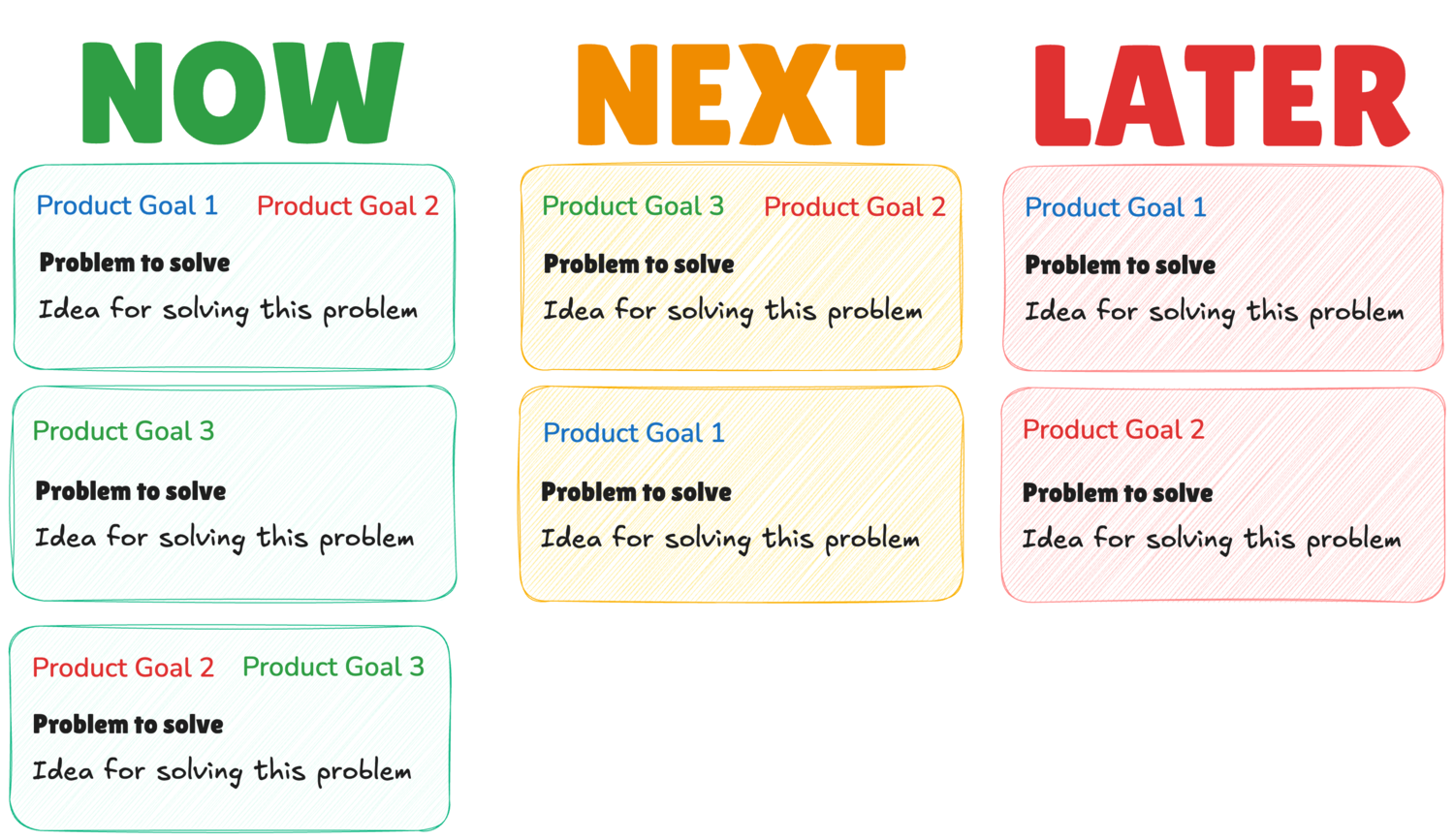Now-Next-Later Roadmap
The Now-Next-Later Roadmap (NNL) provides an overview of product delivery in three time horizons: immediate, relatively soon and long-term. Each delivery item in the roadmap documents two key aspects: the problem to solve, and how solving that problem relates to an existing product objectives.

Janna Bastow formulated the NNL roadmap format in 2022.
Note that, although the structure might look similar, this model should not be confused with the popular Three Horizons Model. The time frames are significantly different in that model. The Now-Next-Later Roadmap is concerned with milestones of a single product, where the Three Horizons Model talks about introducing different products in much longer timelines.
Benefits of Now-Next-Later roadmaps
By grouping delivery objectives into three timeline categories, the roadmap format allows for different levels of certainty, different management techniques and different policies to be applied to items depending on how soon they need to be actioned. This can save considerable time when dealing with future work compared to roadmaps that do not make such distinctions. NNL roadmaps allow product teams to start delivery using relatively broad plans, and avoid spending too much time on analysis for items in the future.
The format keeps you moving forward without wasting precious resources
– Jannna Bastow, Why I Invented the Now-Next-Later Roadmap
By ensuring that each item in the roadmap relates to a specific product objective, the NNL roadmaps help avoid Air Sandwich plans.
As the delivery items in the roadmaps focus on the problems to solve, NNL roadmaps allow product teams to focus on prioritising problems and opportunities instead of features. In that sense, they help teams implement Christmas Prioritisation in a systematic way, by limiting the milestones to 3 time horizons.
Applicability and limitations
Now-Next-Later Roadmaps fit well into flow-based iterative delivery, in particular pull-based systems such as Lean, as long as there is no need for up-front commitment on specific timelines.
NNL roadmaps do not allow easily planning for specific market events or windows (such as important trade-shows or dates imposed by regulatory changes), product release cycles or market rhythms (such as pre-Christmas buying or summer holidays).
NNL roadmaps treat each delivery item independently, so do not have a way of capturing dependencies between items.
Learn more about the Now-Next-Later Roadmap
- Why I Invented the Now-Next-Later Roadmap by Janna Bastow (2022)